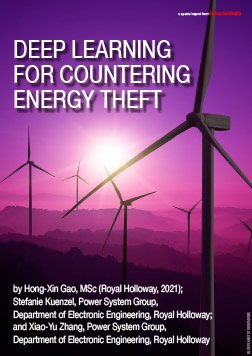CW+ Premium Content/E-Handbooks
Access your Pro+ Content below.
Royal Holloway: Deep learning for countering energy theft


Sponsored by TechTarget ComputerWeekly.com
Energy theft is a critical issue for power system operators and billions of pounds are lost to it every year. In a conventional power grid, energy theft is difficult to detect due to limited communication and data transition. Smart meters, along with data mining technology, lead to significant technological innovation in the field of energy theft detection. This article in our Royal Holloway security series describes a convolutional long short-term memory-based energy theft detection model to identify electricity thieves.
Table Of Contents
- Energy theft is considered a crime in many countries, and it usually refers to the intentional avoidance of paying legitimate bills by energy users.
- Energy theft not only disrupts a fair market for electricity consumption, but also causes significant financial losses to utility companies.
- One of the reasons for the rapid growth of advanced metering infrastructure (AMI) over the past few years is to reduce the non-technical loss (NTL) caused by electricity theft.
- Due to the complexity of power theft methods, it is difficult to achieve effectiveness with manual detection alone. Machine learning-based energy theft detection (ETD) models are also being deployed in smart grids and can be used to assist in the automatic detection and identification of electricity thieves.
- Research in the field of machine learning in ETD can be based on classical machine learning (non-deep learning) and deep learning. Deep learning can automatically extract features and optimise their weights by building models – the weight is the parameter that is varied to adjust the expected computational outcome, and the training process is essentially an update of the weights.
- Current ETD models in deep learning can be based on different branches such as multilayer perceptron (MLP), convolutional neural network (CNN), and long short-term memory (LSTM).
- The goal of this project is to build a novel ETD model based on convolutional long short-term memory (ConvLSTM) and to verify its accuracy and robustness in identifying electricity thieves, and to show that it outperforms the MLP and CNNLSTM models.







